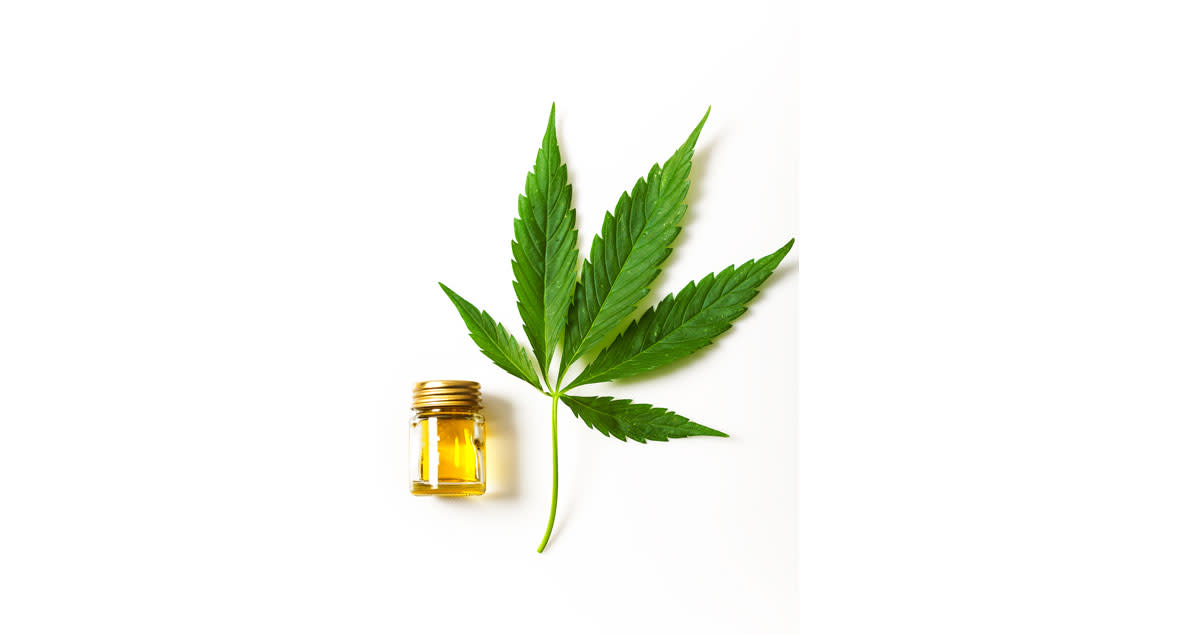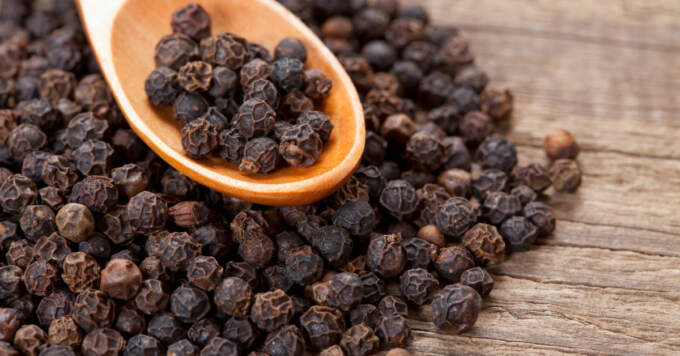Cannabis oil and its potential health benefits have captured the spotlight in both news outlets and legislative discussions, particularly focusing on its use as a dietary supplement and the food safety considerations surrounding cannabinoids. This buzz is all about cannabinoids, the powerful compounds in cannabis known for their remarkable ability to support health, potentially aiding in the treatment of conditions ranging from heart disease to schizophrenia.

However, the use of cannabis as medicine raises some eyebrows due to possible side effects like impaired memory, focus, and psychoactive reactions, mainly because of THC, its active ingredient. This has sparked a growing interest in CBD, a different type of cannabinoid without these psychoactive properties. Researchers are diving deep into CBD, discovering its unique ability to interact with our brain and body by influencing receptors and proteins.
Interestingly, nature offers us more than just cannabis for tapping into these benefits. Several plants have “cannabimimetic” compounds. Although these plants don’t share the exact chemical structure of cannabinoids, they can have similar beneficial effects on our body, due to substances that mimic the effects of cannabis.
This discovery is particularly exciting for scientists and health experts focusing on the therapeutic potential of cannabis. These cannabinoid-like superfoods and herbs play a crucial role in nourishing our endocannabinoid system (ECS). The ECS is a vital network in our bodies, consisting of neurotransmitters and cannabinoid receptors found in the brain and throughout our nervous system. This research opens up new avenues for understanding how we can enhance our health and well-being through nature’s bounty.
Cannabinoids and the Endocannabinoid System
The endocannabinoid system is a crucial player in keeping our internal environment balanced and healthy. This remarkable system is at the heart of many of our body’s processes, ensuring everything runs smoothly.
The discovery of the ECS was a breakthrough that came from researching the positive impacts of cannabis. Scientists uncovered this intricate network that’s key to our well-being, composed of receptors that respond to cannabinoids found not just in cannabis but also in other plants.
These receptors are everywhere – in our brains, immune system, tissues, and organs, playing a significant role in our overall health. According to research in Pharmacological Reviews, tweaking the ECS could offer new treatments for a spectrum of conditions, including mood disorders, heart disease, obesity, and even cancer.
What’s fascinating is that all vertebrates have these cannabinoid receptors, enabling a wide range of bodily functions. Researchers have pinpointed two types – CB1 receptors, located in our nervous system and organs, and CB2 receptors, which are part of our immune system. The exploration of cannabinoids and their effects is an ongoing journey, with much more to learn.
Previously, it was thought that only THC and some phytocannabinoids influenced these receptors. Now, we’re discovering that certain plants and various foods, through compounds called cannabimimetics, can also interact with these receptors, positively impacting the ECS. This expanding field of study opens up exciting possibilities for enhancing our health in natural, holistic ways.
Potential Health Benefits of Cannabis & CBD
Cannabis:
- Pain Relief: Effective in managing chronic pain due to various conditions, including arthritis and multiple sclerosis.
- Improved Lung Capacity: Unlike smoking cigarettes, cannabis use has been associated with increased lung capacity.
- Regulation of Seizures: Research is ongoing on how cannabis can control or reduce seizures.
- Anxiety and Depression Management: Can alleviate anxiety and depression symptoms when used in controlled dosages.
- Treatment of Inflammatory Skin Diseases: May help treat conditions like psoriasis and severe itching.
- Cancer-Related Symptoms: Helps reduce side effects related to cancer treatment, like loss of appetite and nausea.
- Substance Abuse Treatment: Has been used as a treatment for addiction to opioids and alcohol.
- Neuroprotective Properties: Potential to aid in the treatment of neurological diseases such as epilepsy, multiple sclerosis, and Alzheimer’s.
CBD (Cannabidiol):
- Anxiety Relief: CBD may reduce anxiety behaviors in various disorders, including PTSD, general anxiety disorders, panic disorders, and social anxiety disorders.
- Neuroprotective: Could provide benefits for those with neurological disorders. This could potentially reduce seizures in epilepsy and offer protection against neurodegeneration in the central nervous system.
- Pain Management: Has been shown to reduce chronic pain by impacting endocannabinoid receptor activity, reducing inflammation.
- Anti-acne: The effects of CBD on immune system receptors may help reduce overall inflammation in the body. This can reduce acne.
- Cancer Treatment Support: May help mitigate cancer treatment side effects on the human body, like nausea and vomiting, and has been shown to have anticancer properties in lab studies.
- Heart Health: Recent research has linked CBD with several benefits for the heart and circulatory system, including the ability to lower high blood pressure.
- Antipsychotic Effects: Studies suggest that CBD may help people with schizophrenia and other mental disorders by reducing psychotic symptoms.
- Substance Abuse Treatment: CBD has been shown to modify circuits in the brain related to drug addiction, showing potential in treating heroin addiction.
Both cannabis and CBD offer a range of benefits, and their use is being increasingly supported by scientific research. However, it’s important to approach their use carefully, considering the legal status in your region and potential health impacts.
10 Herbs & Superfoods that Mimic Cannabinoids
1. Essential Oils of Rosemary, Black Pepper, Ylang Ylang, Lavender, Cinnamon and Cloves
Rosemary, black pepper, ylang ylang, lavender, cinnamon, and cloves are all rich in nature’s own special aroma compounds called terpenes. These not only enchant our senses but also interact with the CB2 receptor in our immune system. Essential oils from black pepper, lavender, clove, rosemary, and cinnamon boast a special ingredient, beta-caryophyllene (βCP), known for its unique ability to engage with our body’s systems.
Research has revealed that βCP has a special talent for binding selectively to the CB2 receptor, acting as a functional CB2 agonist. This means it can trigger specific physiological reactions, akin to flipping a switch within our body. Found abundantly in cannabis and as a common element in the oils of various spices and plants, βCP brings with it natural effects that mimic those of cannabinoids, without the high.
Thus, oils containing βCP stand out as natural, non-psychoactive options that can support anti-inflammatory and immune-boosting efforts. Engage with these oils to harness the gentle power of nature in supporting your body’s well-being.

2. Echinacea
Scientists found out that some special ingredients in the Echinacea plant can work with a part of our body called the CB2 receptor. This is like a tiny switch that helps control inflammation, which is when parts of your body get swollen or sore. These ingredients from Echinacea can turn on this switch without affecting another part called the CB1 receptor. They can also stop a certain reaction that could make inflammation worse, just like how a superhero blocks a villain’s attack. Plus, they can work kind of like another substance our body makes naturally to fight inflammation.
Also, these Echinacea ingredients can get into our blood when we eat them, showing they work inside our bodies. Another plant part, found in carrots and some other plants, can also connect with our body’s switches but in a different way, and it might not be as helpful because it can cause inflammation in the skin.
Echinacea, a type of coneflower, is celebrated for its strong immune-boosting properties. Many people turn to echinacea to lower their risk of getting a cold and to shorten the time they’re sick with cold symptoms. Beyond fighting colds, echinacea is also praised for its pain-relief capabilities and its positive effects on mental health.
This plant is packed with compounds known as N-acylethanolamines. These special fatty acids have a knack for connecting with and activating cannabinoid receptors in the body. Specifically, when they interact with CB2 receptors, these echinacea compounds play a key role in managing immune responses and lessening inflammation.(4, 5)
3. Truffles
Truffles, particularly the black truffle known as Tuber melanosporum, are not just extraordinary for their taste but are also fascinating subjects of scientific study. These special mushrooms are the fruiting bodies of underground fungi and are highly prized in the culinary world. A key process in their growth involves the production of melanin, similar to what gives color to human skin.
Recent research published in Pubmed has uncovered that black truffles contain anandamide and significant enzymes from the endocannabinoid system, which is also found in humans. Anandamide is a compound that boosts mood. It may be key to truffle maturity and their interaction with surroundings. This discovery shows truffles might use anandamide to aid their growth. It could also help attract animals that eat them.
Anandamide is known for its presence in the human body, where it binds to receptors and can release chemicals in the brain similar to THC, the active compound in marijuana that affects mood and cognition. This has led some scientists to nickname anandamide the “bliss molecule” because of its potential effects on enhancing mood, appetite, memory, and fertility.
The presence of anandamide in truffles and its interaction with the endocannabinoid system hint at a sophisticated biological mechanism. This mechanism might have evolved to utilize anandamide for more than just the truffle’s maturation; it could also signal an ancient, natural way to attract those who would spread the truffle’s spores by consuming and then dispersing them.
4. Cacao
Cocoa powder and chocolate are rich in flavonoids that boost brain health by improving blood flow and protecting cells from damage, which may enhance brain function and mood, similarly to the beneficial effects of cannabis on the brain. Studies suggest these flavonoids can also preserve cognitive abilities as we age, potentially reducing the risk of Alzheimer’s disease and stroke. While chocolate is calorie-dense and could lead to weight gain if overconsumed, moderate intake appears to offer more health benefits than risks. Recent research even indicates that regular chocolate consumption might be linked to a lower body mass index, highlighting the need for further investigation into cocoa’s positive effects.

5. Helichrysum
A South African plant, known as “woolly umbrella” or Helichrysum umbraculigerum produces cannabinoids similar to those found in cannabis. Researchers from the Weizmann Institute of Science have identified over 40 cannabinoids in this plant. Unlike cannabis, the woolly umbrella is fast-growing and its cannabinoids are primarily produced in its leaves, making it potentially more economically viable for cannabinoid production. These findings suggest that the woolly umbrella could be a valuable new source of cannabinoids with significant potential for a broad range of diseases, including cancer and neurodegenerative disorders.
6. Omega-3 Fatty Acids
Omega-3 fatty acids can increase the production of endocannabinoids. These molecules occur naturally in the body. They function similarly to cannabinoid compounds from the cannabis plant, like THC and CBD. Endocannabinoids are components of the endocannabinoid system. This complex system regulates mood, appetite, pain sensation, and inflammation.

7. Kava
Kava is a traditional beverage from the Pacific Islands, known for its sedative and euphoric effects, attributed to various compounds it contains. Recent research has focused on one specific compound found in kava, named yangonin, for its interaction with the body’s cannabinoid system. It has been discovered that yangonin can bind to cannabinoid CB1 receptors in the brain, which are involved in regulating mood, pain, and other physiological processes. Although yangonin’s effectiveness at these receptors is weaker compared to THC, the primary psychoactive compound in cannabis, this finding sheds light on the potential mechanisms behind kava’s pharmacological effects.
8. Maca
Maca (Lepidium meyenii) is a plant native to the high Andes of Peru, known for its cruciferous root, which is rich in nutrients and has been traditionally used for its medicinal and nutritional properties. It is available in various forms, including powder, capsules, and extracts.
Currently, the stimulating or revitalizing effects of specific components in maca (known as macamides) can be linked to their interaction with endocannabinoid receptors. This interaction is among several mechanisms proposed to explain these effects, which also include potential therapeutic benefits for conditions like anxiety, depression, and pain.

9. Copaiba
Beta-caryophyllene (BCP) is a special type of compound mostly found in copaiba (a type of tree), making up to 87.3% of its composition. It’s a natural substance that acts a bit like the compounds found in cannabis, but it doesn’t make you feel high, which makes it an attractive option for use as a dietary supplement. BCP, alongside similar compounds such as isocaryophyllene and alpha-humulene, or in its changed form, caryophyllene oxide, can also be found.. It’s known for having pain-relieving and anti-inflammatory effects, similar to other cannabis-related compounds.
Unlike other cannabis compounds that can affect your mind, BCP specifically targets a receptor that doesn’t cause psychoactive effects, making it safe and non-intoxicating. It’s considered a safe, nonpsychoactive ingredient in foods and has multiple health benefits, including reducing inflammation. Essential oils with BCP affect the ECS directly by binding to a specific part of it, offering therapeutic benefits without the high.
10. Holy Basil
Holy basil and cannabis share a unique compound, β-caryophyllene, which interacts with the body’s endocannabinoid system, specifically targeting CB2 receptors without psychoactive effects. This compound, found in other oils as well, suggests a similarity in the therapeutic potential of holy basil and cannabis, especially in anti-inflammatory and pain-relief applications. Additionally, both contain compounds that may act as agonists for peroxisome proliferator-activated receptors (PPARs), crucial for regulating metabolism and inflammation. This parallel mechanism indicates a potential overlap in their benefits, highlighting a fascinating area of study in phytotherapy and pharmacology.
Side Effects & Risks
Whenever incorporating new herbal supplements or cannabinoid oils into your wellness routine, consulting with a healthcare professional is crucial, especially to understand any potential interactions with prescribed medications. The optimal utilization of these supplements, including those containing cannabidiol (CBD), depends on the specific product’s formula and brand; hence, always adhere to the label’s instructions and seek advice from a healthcare provider to identify the suitable dosage for your needs.
Should you encounter any adverse effects from cannabidiol or other herbal products, it’s important to cease use immediately and seek professional guidance. Additionally, for individuals considering cannabis use in pregnancy, a thorough discussion with a healthcare professional is essential to fully comprehend the possible implications and ensure the safety of both mother and child.
In looking at cannabinoids and the myriad of plant foods that contain compounds mimicking their effects, we’ve seen the vast potential these natural elements hold for our health and well-being. From the anti-inflammatory and pain-relief properties found in the likes of holy basil and copaiba, to the mood-enhancing effects of truffles and the immune-boosting capabilities of echinacea, nature offers a treasure trove of alternatives to harness the benefits without the psychotropic effects associated with cannabis.
However, navigating this landscape requires knowledge and caution. If you want to see how superfoods and cannabinoid oils can boost your health, Body Ache Escape Wellness Center is here to help. We offer personalized massage therapies suited to your needs. Make an appointment with us. It’s your step towards holistic well-being. We ensure you get professional advice and support to safely add these natural wonders to your life. Let us help you embark on a journey of discovery and healing, tapping into the power of cannabinoids and beyond.
Frequently Asked Questions
What is the difference between Hemp and THC?
Hemp and THC (tetrahydrocannabinol) differ primarily in their chemical composition and psychoactive effects. Primarily grown for industrial use, hemp, a strain of the Cannabis sativa plant species, contains low levels of THC, usually less than 0.3%, which makes it non-psychoactive. In contrast, THC is the principal psychoactive constituent of cannabis that produces the “high” associated with marijuana use, found in higher concentrations in different strains of the Cannabis plant.
What are the best food ingredients to use for cannabinoid benefits?
The best foods that have similar effects of cannabinoids are black pepper, cacao, truffles, basil, hemp seeds and walnuts.







